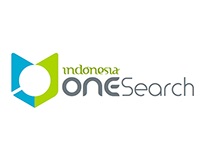Resiliensi Ruang Permukiman Kota dalam Menghadapi Pandemi COVID-19
Abstract
Upaya pencegahan dan pertahanan dalam menghadapi pandemi COVID-19 di Kawasan permukiman kota diperlukan penetapan tingkat kerawanan suatu wilayah. Hal tersebut berkaitan erat dengan kondisi fisik, sosial, ekonomi, kepadatan penduduk, dan keterbatasan infrastruktur yang berpengaruh terhadap penyebaran COVID-19. Kajian ini berfokus pada mekanisme ketahanan yang dibutuhkan oleh permukiman perkotaan sebagai upaya pengendalian COVID-19. Adapun tujuan penelitian untuk mengetahui persepsi masyarakat sebagai pengguna ruang hunian dan mengetahui karakteristik ketahanan Permukiman dalam menghadapi pandemi COVID-19. Penelitian ini menggunakan metode kualitatif dimana peneliti berperan dalam proses pengembangan penelitian yang menyesuaikan dengan kondisi studi kasus. Adapun untuk mengetahui karakteristik studi kasus, diperlukan observasi dan validasi di lapangan, serta menilai persepsi masyarakat. Penelitian ini menggunakan analisis deskriptif kualitatif yaitu mereduksi data dan menentukan kesimpulan. Hasil dari penelitian ini adalah sistem resiliensi suatu ruang permukiman kota yang terbentuk dalam menghadapi Pandemi COVID-19. Dengan mengetahui sistem tersebut berpeluang dalam menciptakan ruang permukiman yang aman dan berkelanjutan.
Kata Kunci: Covid-19, Resiliensi, Permukiman Kota
Full Text:
PDFReferences
Adler, A. B., & Saboe, K. N. (2017). How Organisations and Leaders Can Build Resilience: Lessons from high-risk occupations. In Managing for Resilience (pp. 171–189). Routledge.
Corburn, J., Vlahov, D., Mberu, B., Riley, L., Caiaffa, W. T., Rashid, S. F., Ko, A., Patel, S., Jukur, S., & Martínez-Herrera, E. (2020). Slum health: arresting COVID-19 and improving well-being in urban informal settlements. Journal of Urban Health, 97(3), 348–357.
Creswell, J. W., & Creswell, J. D. (2017). Research design: Qualitative, quantitative, and mixed methods approaches. Sage publications.
Cutter, S. L., Boruff, B. J., & Shirley, W. L. (2003). Social vulnerability to environmental hazards. Social Science Quarterly, 84(2), 242–261.
Danim, S. (2002). Menjadi peneliti kualitatif. Bandung: pustaka setia.
Ellis, R. (2020). Letters, power lines, and other dangerous things: The politics of infrastructure security. MIT Press.
Enders, J. (2001). Measuring community awareness and preparedness for emergencies. Australian Journal of Emergency Management, The, 16(3), 52–58.
Gatt, J. M., Alexander, R., Emond, A., Foster, K., Hadfield, K., Mason-Jones, A., Reid, S., Theron, L., Ungar, M., & Wouldes, T. A. (2020). Trauma, resilience, and mental health in migrant and non-migrant youth: an international cross-sectional study across six countries. Frontiers in Psychiatry, 10, 997.
Grotberg, E. H. (1999). Tapping your inner strength: How to find the resilience to deal with anything. New Harbinger.
Holling, C. S. (1973). Resilience and stability of ecological systems. Annual Review of Ecology and Systematics, 4(1), 1–23.
Hong, B., Bonczak, B. J., Gupta, A., Thorpe, L. E., & Kontokosta, C. E. (2021). Exposure density and neighborhood disparities in COVID-19 infection risk. Proceedings of the National Academy of Sciences, 118(13).
Jewett, R. L., Mah, S. M., Howell, N., & Larsen, M. M. (2021). Social Cohesion and Community Resilience During COVID-19 and Pandemics: A Rapid Scoping Review to Inform the United Nations Research Roadmap for COVID-19 Recovery. International Journal of Health Services, 0020731421997092.
Kusumastuti, R. D., Husodo, Z. A., Suardi, L., & Danarsari, D. N. (2014). Developing a resilience index towards natural disasters in Indonesia. International Journal of Disaster Risk Reduction, 10, 327–340.
Onditi, F., Nyadera, I. N., Obimbo, M. M., & Muchina, S. K. (2021). How urban ‘informality’can inform response to COVID-19: a research agenda for the future. History and Philosophy of the Life Sciences, 43(1), 1–5.
Setiawan, H., & Arsitektur, L. (2010). Perilaku: Pengantar ke Teori, Metodologi, dan Aplikasi. Gadjah Mada University Press.
Sugiyono, D. (2013). Metode penelitian pendidikan pendekatan kuantitatif, kualitatif dan R&D.
Susanna, D. (2020). When will the COVID-19 pandemic in indonesia end? Kesmas: Jurnal Kesehatan Masyarakat Nasional (National Public Health Journal), 15(4).
Twigg, J. (2007). Characteristics of a disaster-resilient community: A guidance note. Department for International Development (DFID).
Wu, Y.-C., Chen, C.-S., & Chan, Y.-J. (2020). The outbreak of COVID-19: An overview. Journal of the Chinese Medical Association, 83(3), 217.
Yunas, N. S. (2019). Implementasi Konsep Penta Helix dalam Pengembangan Potensi Desa melalui Model Lumbung Ekonomi Desa di Provinsi Jawa Timur. Matra Pembaruan: Jurnal Inovasi Kebijakan, 3(1), 37–46.
DOI: https://doi.org/10.17509/jaz.v5i1.42372
Refbacks
- There are currently no refbacks.
Copyright (c) 2022 Yusvika Ratri Harmunisa, Rizka Tiara Maharani, Wendy Sunarya

This work is licensed under a Creative Commons Attribution-ShareAlike 4.0 International License.





